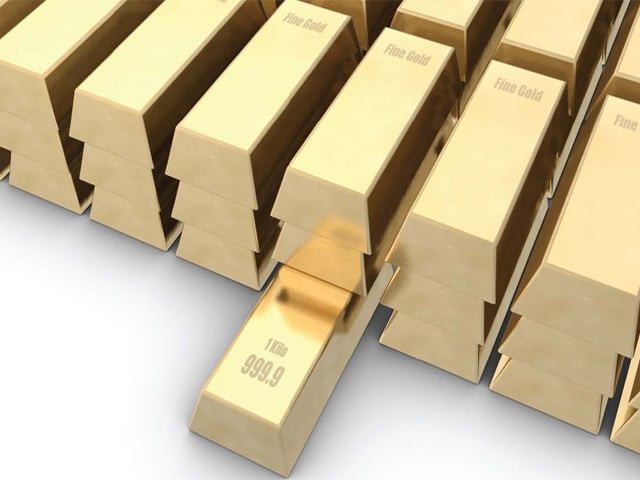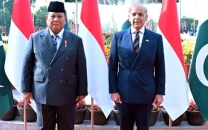Gold fills global demand for scarcity
A new world monetary order needs to be settled on and soon.

In a recent article, World Bank President Robert Zoellick advocated for the return of a currency linked to gold in some form. “The system should also consider employing gold as an international reference point of market expectations about inflation, deflation and future currency values,” wrote Zoellick in a Financial Times column.
All about gold
The total amount of gold mined up to the end of last year was 165,000 tons, according to the World Gold Council. Current prices of the metal are hovering at $1,370 per ounce – an all-time high. The previous high was during the early 1980s, when the commodity’s value flirted with the $700 per ounce mark and spectacularly shot up to $850 per ounce transiently.
Interestingly, the current gold price, although at a nominal high, is nowhere near the inflation-adjusted high of the 1980s.
The golden goose
The reason gold is touted as a good investment is simply because of its scarcity. In the absence of periodic returns on investment, the only rational explanation for investing in gold is an expectation of appreciation in its price. Thus, the only reason behind purchasing gold as an investment is as a store of value.
Simply put, investors believe that expected increases in the price of gold will protect their total wealth from eroding.
Inflation stimulates, with good reason, a fear of erosion in wealth. Governments pumping money into the economy leads to a fear of increases in prices of goods and services and an erosion in the value of currency.
With stimulus spending in the western half of the world, the US in particular, reaching unprecedented levels and the domestic government’s insistence on monetising deficits, paper money is flooding global markets and inflation expectations.
With real interest rates negative almost across the globe and with little investment opportunity on the local front, investors and even households have little choice but to turn to gold as a store of value. As of now, paper money is serving the sole purpose of a medium of exchange with gold eroding paper money’s claim to conservation of value.
It must be noted that gold is not the only commodity that has seen a rise in investor interest as currency floods the economy. Cotton and oil have led the surge in global commodity prices despite suppressed demand for the latter. Ultimately, the current and future rise in commodities is symptomatic of paper money failing to fulfil investors’ demand for scarcity.
A golden economy
Currency wars are due to escalate as countries pump more money into the economy to serve not only as stimulus for domestic demand but also to boost exports. Almost every developed country is looking to its external sector to lead it out of the current recession.
Such monetary extravagance would not have been possible in times of the gold standard – a system that linked the value of a unit of the circulating currency to gold. Thus, it would be possible to exchange the circulating currency for the corresponding amount of gold. Similarly, the value of currency in circulation will be limited to the amount of gold reserves in the country.
Up to the Great Depression, most countries with suitable reserves had fixed the value of their currency to a certain amount of gold. Unfortunately, the depression, and later the Second World War, led most economies to abandon the gold standard.
The Bretton Woods system emerged in the aftermath of the Second World War as an extremely US-centric international monetary system. The reason for such a system was straightforward: the US had emerged relatively unscathed from the war and the dollar was the only major currency in which investors placed some amount of confidence as the global economy looked to get back on track.
Thus, the dollar was fully convertible to gold at $35 per ounce and all other currencies could be converted to the dollar at a fixed, pegged exchange rate, which could only be revised after approval from the International Monetary Fund (IMF).
The world economy was contingent on the health of the dollar. If confidence in the greenback deteriorated, then the US would be forced to run down its gold reserves or increase the convertibility of gold to match the price in the open market. Ultimately, that is exactly what happened as the European and Japanese currencies became stronger on the back of remarkable economic growth, the pressure on the dollar mounted with the Vietnam War and yawning trade deficits.
Any link between money and gold was removed by 1971 by US President Nixon.
The world’s worst fear
A relapse into an era similar to the Great Depression is driving most of the world’s policy decisions. Deflation, or a decrease in the general level of prices, is worse than double-digit inflation. The Japanese economy has suffered from this malaise in the form of decreasing prices and stagnant output.
With any degree of currency convertibility to gold, there is an upper limit on the amount of money circulating in the economy which automatically caps the amount of growth in an economy. Moreover, the government has to restrict its spending and cannot spend in case of any negative unforeseen circumstances.
As an example, Britain had to suspend convertibility of the pound to gold during war if it were to continue fighting. There is a proven correlation between the time it took for countries to recover from the Great Depression and how quickly they abandoned the gold standard.
Fears of deflation have driven the injection of a trillion dollars into the American economy. The injection may erode the value of the dollar and drive up the value of gold manifold, but the US and most advanced economies will continue to look to their external sectors to drive them out of recession.
Unfortunately, this will put them at loggerheads with developing economies, such as China, which has consistently depended on exports to drive growth.
As the economic heavyweights battle out a prisoners’ dilemma scenario with money littering the globe, it seems probable that all commodities, including gold, will benefit from their renewed scarcity.
To the individual, these commodities may look like remarkable investments but the rally will only last as long as their relative scarcity lasts.
The time for a new global monetary order is nigh. Once that order takes effect, gold will probably return to the diminished stature it acquired in 1971. For the sake of the global economy, let’s hope these countries stop squabbling soon.
Published in The Express Tribune, November 22nd, 2010.



















COMMENTS
Comments are moderated and generally will be posted if they are on-topic and not abusive.
For more information, please see our Comments FAQ